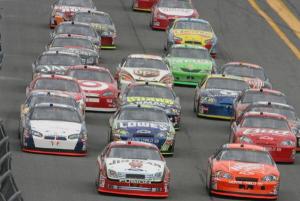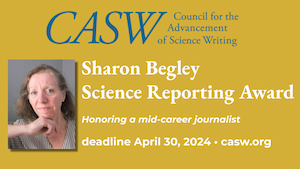By Anthony Cave
The Minnesota Twins and the Daytona 500 both care about precipitation, and scientists are very happy to use their data.
Researchers who need detailed weather measurements have turned to volunteers, or “citizen scientists,” from almost any realm — even Major League Baseball teams — to aid with their projects. The coordinators of several such scientific networks described their strategies, and presented their rich data, on February 15 at the American Association for the Advancement of Science meeting in Boston.
Rainfall figures from the Daytona 500 are part of the 15-year-old Community Collaborative Rain, Hail, and Snow Network (CoCoRaHS), based at Colorado State University in Fort Collins. “They didn’t tell us, we found [their data] online,” said climatologist Nolan J. Doesken, the network's founder. The Minnesota Twins also have used the project's rain gauges for years.
CoCoRaHS, the largest provider of daily precipitation measurements, relies on more than 16,000 volunteers in the U.S. and Canada who set up rain gauges in their backyards — or in their stadiums. The citizen brigade records data on the CoCoRaHS website.
Commitment levels to the project are high, Doesken said, right down to the required materials: “We don’t even give them rain gauges,” he said.
Since 2012, the Daytona International Speedway in Daytona Beach, Fla. has used rain gauges to record rainfall amounts. Credit: Motorsports Images and Archives
A similar project in the United Kingdom attracts volunteers by opening a window onto past climate, said Philip Brohan, a climate scientist for the Met Office, the U.K.’s weather service.
“We can bring the past to us,” Brohan said. “They can contribute to science, they can contribute to history.”
Brohan’s site, OldWeather.org, contains a multitude of Royal Navy ship logs. Citizen users, either logged in or anonymously, can extract weather data from the detailed logs and record the figures on the site, such as barometric pressure on a certain day. The data allow Brohan to track weather conditions on the open seas around the time of World War I. Site users have recorded more than a million pages to date.
The ship logs contain everything from who was sick on a certain day to lost materials — a treasure trove for history buffs.
“They love reading the stories of ships,” Brohan said. “Most other weather reports are just weather reports.”
Throughout the AAAS session, the scientists attributed their need for citizen scientists to shrinking budgets and a desire for larger, more complete sets of data. Because science professionals charge a premium, the demand for citizen scientists have increased.
“It's an expensive way of doing science, but [it leads to] bigger science,” said research associate Scott Stevens of the Cooperative Institute for Climate and Satellites in Asheville, North Carolina.
Ultimately, people love the weather, Stevens said — and the data stream in.
His main project, the CycloneCenter, analyzes past hurricane data by providing more than 300,000 satellite images of storm systems for citizen scientists to scrutinize. Using a five- to ten-minute process called the Dvorak Technique, anyone with a keen eye can categorize the type of storm and whether it was getting weaker or stronger with time.
One of the project's main focal points is the 2005 Atlantic hurricane season, a record year with damaging storms such as Katrina, Rita and Wilma.
In the past, only forecasters who knew the technique could analyze the images. However, the site has detailed explanations that allow citizens to provide high-quality assessments.
“We want people to know that what they’re doing is actually valuable,” Stevens said.
The site averages about 600 users a day. "Super users," those who have analyzed more than 1,000 images, make up one percent of the output.
All users should strive for the top tier — just like in the economy, Stevens joked. “More and more people should try to be in the one percent,” he said.
Anthony Cave is a junior journalism major at Florida International University in Miami. He is an intern at The Miami Herald and a collegiate correspondent with USA TODAY College. Contact him via email at Anthonycave5@yahoo.com or on Twitter @Anthony_Cave. A full work portfolio can be found on his site at acavemedia.com.

.png)

